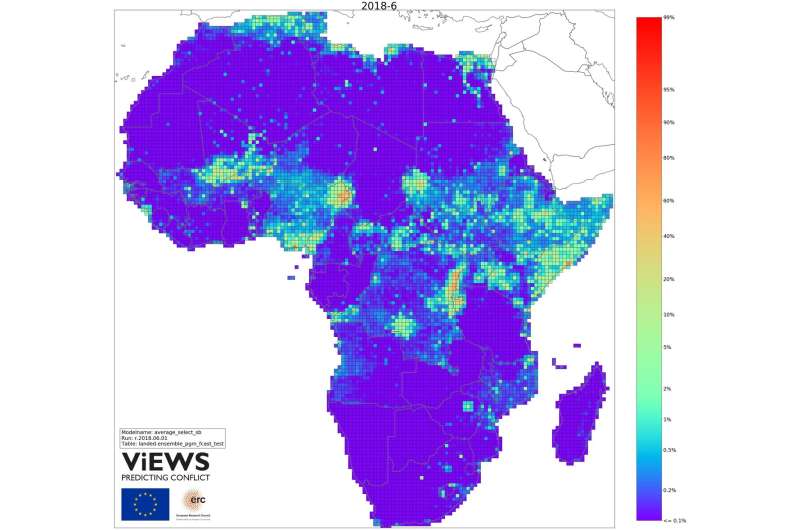First public forecasts from ViEWS, a political Violence Early-Warning System

The challenges of preventing, mitigating and adapting to large-scale political violence are daunting, particularly when violence escalates where it is not expected. With funding from the European Research Council, ViEWS: a political Violence Early-Warning System at Uppsala University, is developing a system that is rigorous, data-based, and publicly available. On 7 June, ViEWS released its first public forecasts for Africa.
The ViEWS project (2017-2021) is led by Håvard Hegre, Dag Hammarskjöld, professor in Peace and Conflict Research at Uppsala University, Sweden. ViEWS assesses the risk of three forms of political violence: state-based armed conflict involving states and rebel groups, armed conflict between non-state actors, and violence against civilians. It makes available predictions for countries, sub-national geographical units, and actors.
The predictions are systematically compared to what actually happened and models are revised to optimize predictions. The models' performances are also evaluated and the results made public. ViEWS is committed to providing full transparency on data, documentation and source code. The current forecasts are based on data recorded by the Uppsala Conflict Data Program (UCDP).
"The principle of full transparency is very important to us," says Professor Håvard Hegre. "There are already analytic tools based on intelligence information that are used, for example, by the U.N. We have chosen to maximize transparency and only use open-source data in order to see how far it takes us. This means that we might not get the absolutely best warning system, but it will be the most open. That is our contribution."
Figure 1 shows the first ViEWS forecasts. The system suggests a continued high risk of conflict in Somalia, Nigeria, and other countries in Central Africa. Recent violence in other places, e.g. in Kenya, is predicted to recede.
Along with optimizing evaluation procedures, the project is researching how to set up criteria that make the forecasts maximally useful. For instance, ViEWS will analyze the difficult trade-offs in forecasting efforts. An ability to correctly identify in advance a large proportion of conflict cases is typically associated with a large number of false alarms. ViEWS will contribute to the assessment of the costs and benefits of predictions and false alarms.
Two new UCDP datasets "ViEWS Outcomes" and "UCDP-Candidate" will also be introduced. UCDP is widely recognized as the world-leading provider of conflict data.
More information: Please visit pcr.uu.se/research/views/ for a detailed project description.
Provided by Uppsala University


















